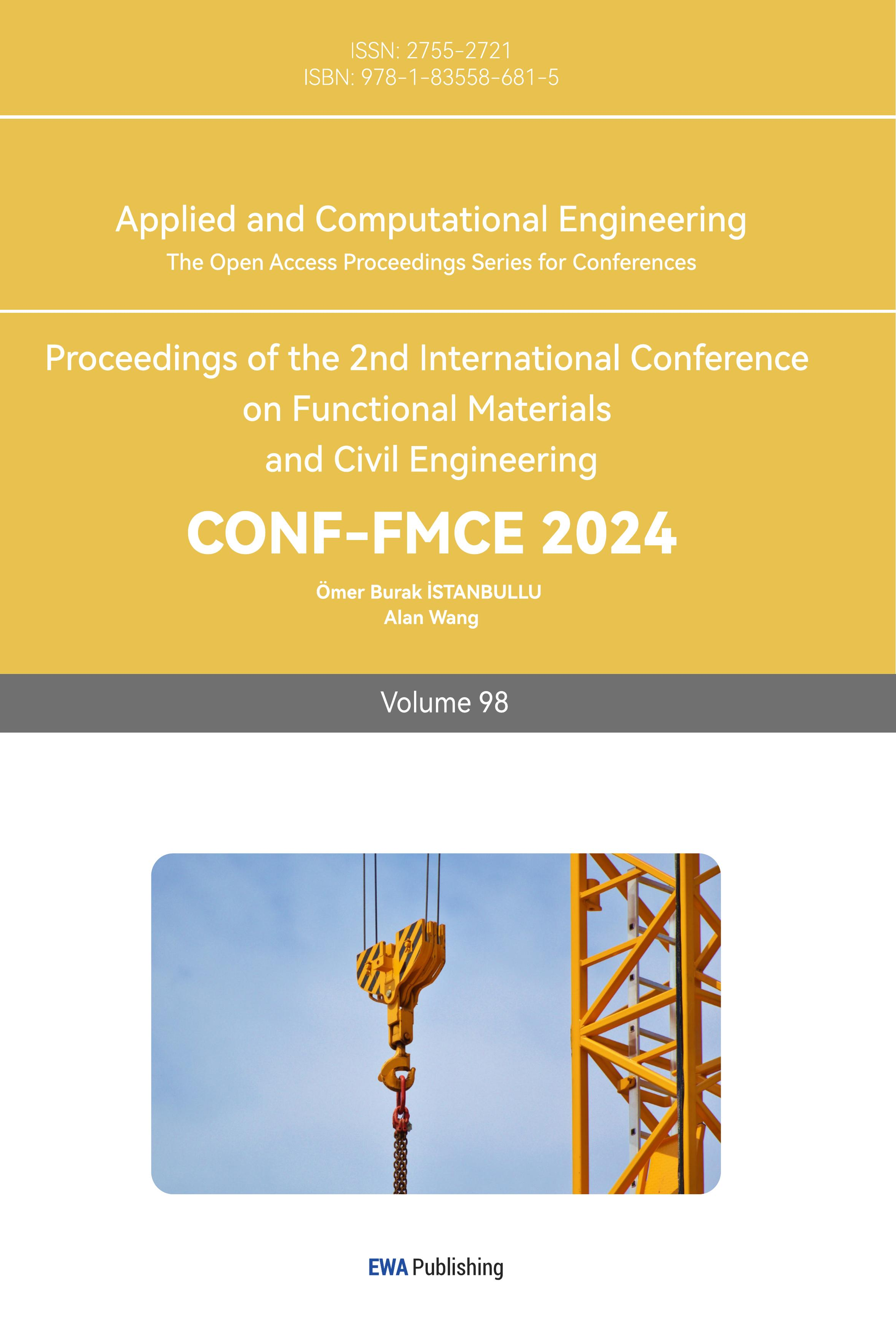1. Introduction
Invented by Robert Stirling in the 1816, the Stirling engine is an engine that converts heat energy to work [1]. According to James Stirling, Robert Stirling’s brother, the Stirling engine aims to work as a safer alternative as well as to save fuel, as many casualties were caused by the unstable parts of other engines at around that time [2]. Later in the 19th century the Stirling engine appeared as a small sized tool for pumping air or water. The design was fairly easy to use and average residents can operate it with ease [2]. However, it was replaced by electric motors or small sized internal combustion engine in the 20th century, and minimal progress was made on Stirling engines until solar energy was designed to fuel Stirling engines in the 21st century [3]. By 2003, Stirling engines once again entered accommodations in the form of micro combined heat and power (also known as micro-CHP) [4]. However, there wasn’t many discoveries and research on Stirling engines in recent years.
This paper aims to increase the attention to Stirling engines and the possibility of implementing it for residential purposes. In this paper, there would be a definition of household Stirling engines, a brief review on the operation principles of the Stirling engines, introduction to micro-CHP and other ways Stirling engines are used for residential purposes.
2. Descriptions of household engine
Household Stirling engines focuses on the Stirling engines used in households for ordinary citizens. The Stirling engine may be applied for a variety of purposes, such as generating heat energy and electricity, for air conditioning (cooling), as fridges. There doesn’t exist of any category to this topic, and Stirling engines used for residential purposes aren’t given much attention and is narrow enough to be seen as a single category.
3. Principle of Stirling engines
Stirling engines have many configurations, one of the most intuitional is the alpha configuration. A sketch is shown in Fig. 1 [5]. Generally, there are four steps as presented in order from Fig. 2 [6]. The first step of the cycle is when most of the gas is pushed to the cylinder with the heat source and expands from the heat to push both pistons inward, propelling the flywheel clockwise. The second step is when the gas has fully expanded and the piston with the heat source pushed to the furthest. With the momentum of the flywheel, the piston pushes the heated air to the cylinder with the cooler. The third step is when most of the heated gas enters the cylinder with the cooler and cools down. The last step symbolizes the end of one cycle and the beginning of another when all of the gas are in the cylinder with the cooler and cooled down, using the momentum of the flywheel, the gas are pushed back to the cylinder with the heater.
This cycle also features a regenerator, a unique feature for Stirling engines contributing to the high thermal efficiency, here it is the green structure in the shape of the net. Regenerators carry the role of storing the heat of one cycle and pass it on to the next. They are usually built with materials like foil and metallic sponge [7].
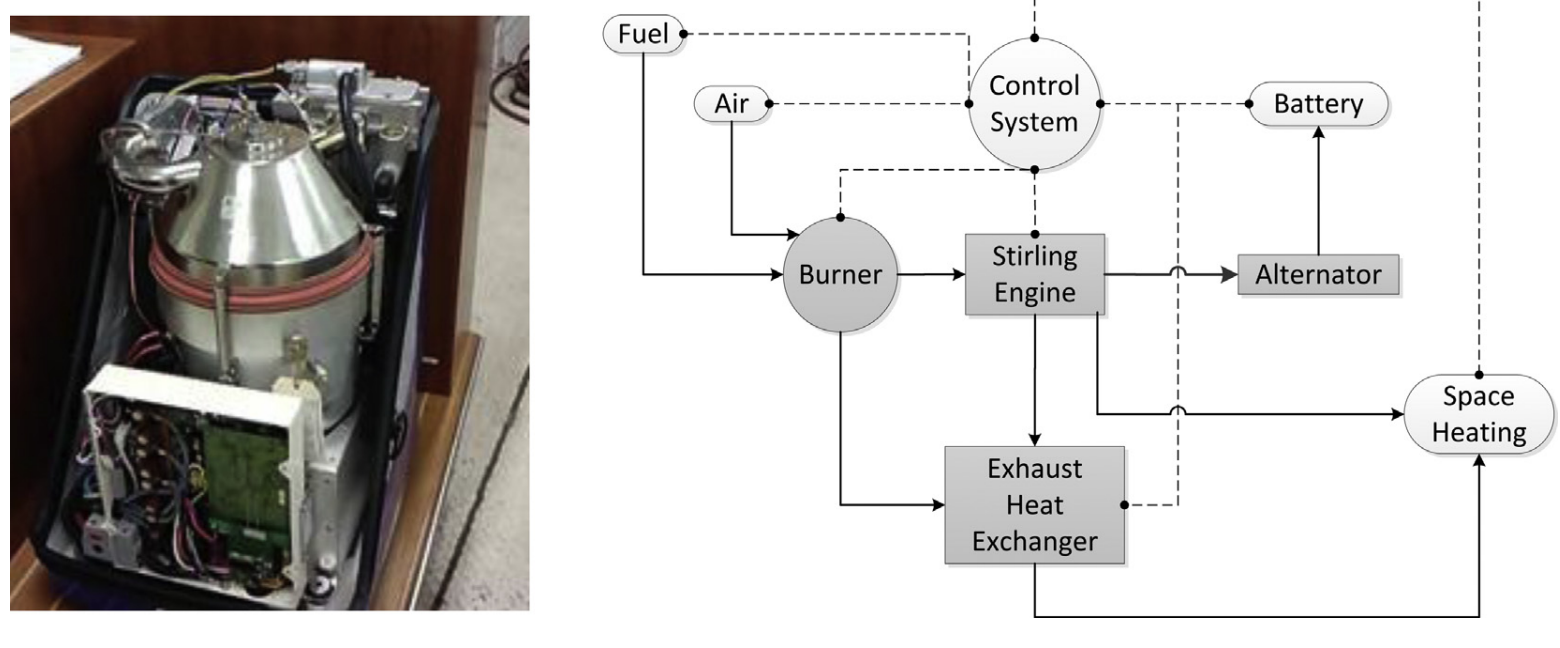
Figure 1. A Stirling engine made for household uses [5].

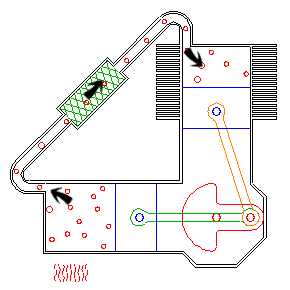
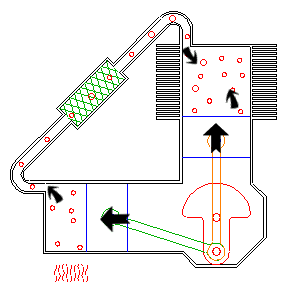
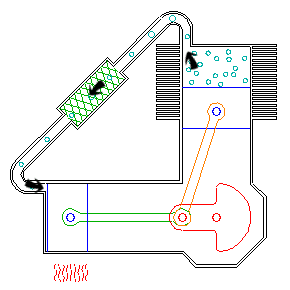
Figure 2. Four steps for the engines: expansion, first transfer, contraction and second transfer [6].
4. Sate-of-art facilities
One of the newest applications of Stirling engine in households is called Micro Combined Heat and Power, micro-CHP in short. Micro-CHP is a facility used in modern households powered by a Stirling engine. It offers the advantage of generating electricity and providing heat simultaneously. A household used micro-CHP can generate up to 1 kW of electricity when heated up [7]. Although the fuel in generally LPG (liquified petroleum gas) and gas, it boasts of an efficiency than plainly burning fossil fuel for heat and is therefore considered as renewable energy [7]. Furthermore, the latest models can use relatively cleaner sources such as biodiesel [7].
Fig. 3 is a diagram in comparison of receiving heat from a boiler and electricity from a factory verses the having heat and electricity generated by the micro-CHP. As shown in the diagram, to produce 1 kW of electricity and 6 kW of thermal energy, it would require 8.95 kW and 7.29 kW for the non-micro-CHP side and the micro-CHP side respectively [8]. Additionally, the amount of wasted energy of the non-micro-CHP side is roughly 6.7 times the wasted energy of the micro-CHP. In the bottom of the graph, there is the clear difference in the efficiency, with the micro-CHP having a much higher efficiency, at 96% [8]. Fig. 4 illustrates the general structure of a Stirling powered micro-CHP for household usage. The micro-CHP mainly consists of 8 parts. The pellet tank and screw feeder for fuel supply; the primary combustor and the Stirling engine for generating electricity and heat energy; the chimney for exhaust of gas; the radiator to spread the heat into the room; the controller and electric load to transfer electricity to the house [9].
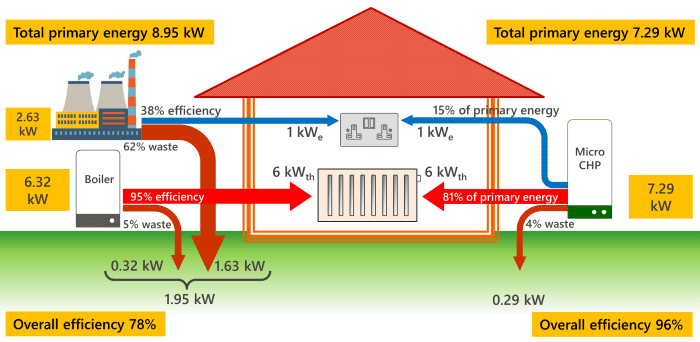
Figure 3. Comparison between traditional means and micro-CHP on heat and electricity supply [8].
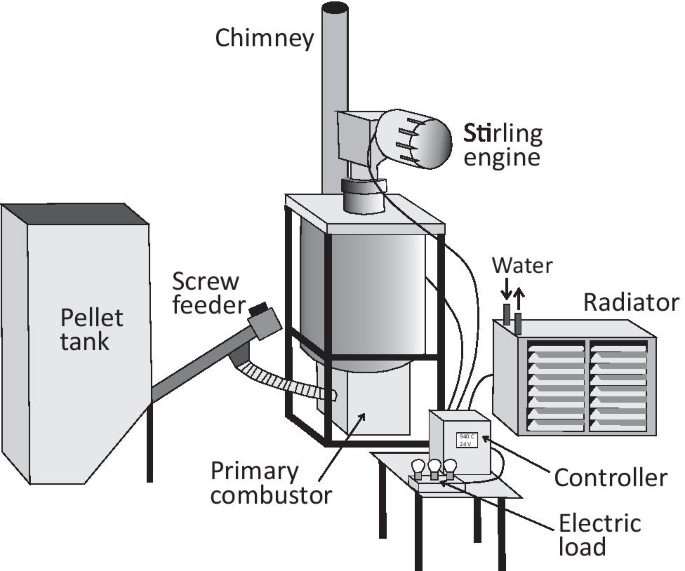
Figure 4. Conceptual diagram of components of a micro-CHP [9].
5. Applications
Micro combined heat and power is an example of Stirling engine integrating into daily life. A Stirling powered micro-CHP can process fuels and provide heat energy and electricity simultaneously with a high efficiency. There are already a lot of implementations of it around the world. Fig. 5 consists of data collected on selected regions of Africa on the performance of micro-CHP. The Stirling engine uses solar energy to generate mechanical energy which is used to pump water. It is especially useful in areas far away from civilization and where there’s not enough electricity supply. The water pump uses solar power to run the Stirling engine and pump water from the ground for irrigation. There's also the use of Stirling pumps to solve problems regarding drinking water in rural areas. NASA invented the NASA water pump, which uses solar energy to pump water from a river, lake, or stream. The purpose of this system is to provide a low-cost, low-technology pump, which can apply in some undeveloped regions [11]. With the high thermal efficiency of the Stirling cycle, it is possible to have solar power converted to electricity and stored to provide a continuous and stable power source. The system generates and stores electricity in day to be used for lighting or whatever at night. With solar energy and an electricity storage, rural areas can have an independent electricity source. An invention by Roelf J. Meijer. combines a Stirling cycle engine, with a solar dish which can produce electricity more efficient than solar panels [12]. Under water operation usually requires continual supply of work, and as submarines have a relatively small space, it would be helpful to have a lower noise level. Since the 1980s, 8 Stirling engine powered submarines have been developed by Kockmus, fueled by compressed oxygen [13]. Furthermore, the capacity reached those of nuclear-powered submarines [13].
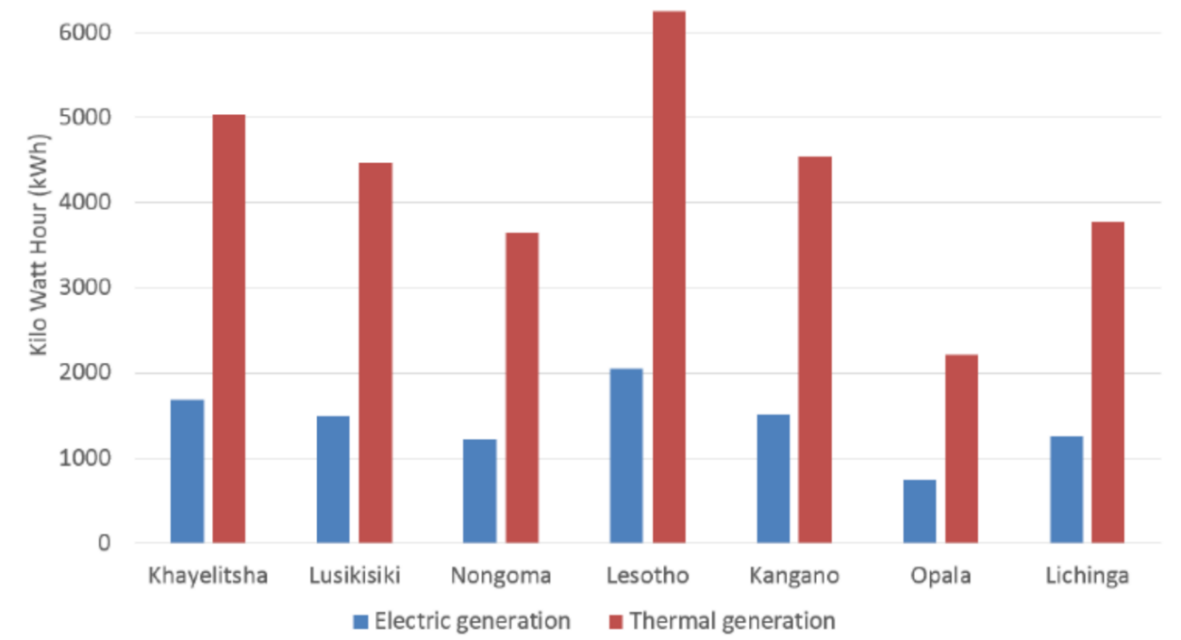
Figure 5. Annual generated energy in kWh for specific locations in Africa [9].
6. Limitations and Prospects
There are multiple limitations to the research of Stirling engines. Firstly, there exists a critical problem typical for Stirling engines – they need time to change the energy output level. This limits its application at various places like on the roads, especially in cities where there’s a lot of traffic lights. Car drivers would need to adjust their driving speed to slow down before red lights, as well as for the difference in maximum speed allowed in different areas. Not being able to quickly change the output level would prove to be a great hinderance at driving. In addition, there is a safety measure for cars to instantly achieve a great speed in critical situation at the cost of large quantity of fuel. However, this feature would be hard to obtain using Stirling engines. Secondly, Stirling engines have a low power to weight ratio and a low power density, along with the fact that they are more expensive than diesel or gasoline engine of similar work output. Lastly, Stirling engines in household applications was not a very popular topic for research, evident through the number of published research papers regarding the topic.
Nevertheless, with its multiple features, Stirling engines have its own distinct direction of advancement. With the high thermal efficiency, it is suited for continual low noise operation with low demand for fast changes in output level. In other words, the Stirling engine can successfully integrate into many household chores, such as generate heat and electricity (micro combined heat and power) in urban areas or being used to pump up water in rural and undeveloped places. Furthermore, with a high thermal efficiency and the advancing technology, it is possible to be widely used in other household roles like air conditioning, also to be used to generate electricity from the wasted heat of other machinery like the oven.
7. Conclusion
To sum up, this study presents various implementations of Stirling engines in various fields and discussed the application of Stirling engines in households. Stirling engines have heat as the source of power and can achieve high thermal efficiency with the regenerators. There are a lot of ways that Stirling engines can be implemented in daily life, including micro-CHP, water pump, electricity generator. With the advance of technology, Stirling engines are now brought up sometimes and participated more in various fields including residential purposes. In the future, with better technologies, Stirling engines may be brought up more due to its high efficiency and extended life span. It would then be possible for it to be included in more household chores which demands of low noise, continuous, and high efficiency. This paper aims to increase the attention to Stirling engines and the possibility of implementing it for residential purposes.
References
[1]. Kongtragool B, Wongwises S 2003 A review of solar-powered Stirling engines and low temperature differential Stirling engines Renewable and Sustainable energy reviews vol 72 pp 131-154
[2]. Finkelstein T, Organ A J 2009 Air engines: The history science and reality of the perfect engine ASME Press
[3]. Ahmadi M H, Ahmadi M A, Pourfayaz F 2017 Thermal models for analysis of performance of Stirling engine: A review Renewable and Sustainable Energy Reviews vol 68 pp 168-184
[4]. BBC NEWS 2003-10-31 Power from the People. Retrieved from: http://news.bbc.co.uk/2/hi/programmes/working_lunch/3231549.stm
[5]. Ulloa C 2013 Feasibility of using a Stirling engine-based micro-CHP to provide heat and electricity to a recreational sailing boat in different European ports Applied Thermal Engineering vol 591–2 pp 414–424
[6]. Keveney M Animated engines Two Cylinder Stirling 2024 Retrieved from: https://animatedenginescom/vstirlinghtml
[7]. Costa S C, Tutar M, Barreno I, Esnaola J A, Barrutia H, García D, Prieto J I 2014 Experimental and numerical flow investigation of Stirling engine regenerator Energy vol 72 pp 800-812
[8]. Micro combined heat and power Energy Saving Trust 2020 Retrieved from: https://energysavingtrustorguk/advice/micro-combined-heat-and-power/
[9]. Efficient small micro-CHP generators are coming ! Sustainability 2024 Retrieved from: https://sustainableonbeoncom/2017/11/efficient-small-micro-chp-generatorshtml
[10]. Prinsloo G, Dobson R, Brent A, Mammoli A 2016 May Modelling and control synthesis of a micro-combined heat and power interface for a concentrating solar power system in off-grid rural power applications In AIP Conference Proceedings vol 1734, 1.
[11]. Fletcher, James C & Kirsten, Charles C 1976-08-03 Solar-powered pump US3972651
[12]. Meijer, Roelf J 1987-11-24 Solar-powered Stirling engine Stirling Thermal Motors Inc. US4707990
[13]. Ferreira A C, Teixeira S, Teixeira J C, Nunes M L, Martins L B 2012 November Modeling a stirling engine for cogeneration applications In ASME International Mechanical Engineering Congress and Exposition vol 45226 pp 361-369.
Cite this article
Ding,H. (2024). Analysis the Principle and Applications for Stirling Engines of Household. Applied and Computational Engineering,98,1-5.
Data availability
The datasets used and/or analyzed during the current study will be available from the authors upon reasonable request.
Disclaimer/Publisher's Note
The statements, opinions and data contained in all publications are solely those of the individual author(s) and contributor(s) and not of EWA Publishing and/or the editor(s). EWA Publishing and/or the editor(s) disclaim responsibility for any injury to people or property resulting from any ideas, methods, instructions or products referred to in the content.
About volume
Volume title: Proceedings of the 2nd International Conference on Functional Materials and Civil Engineering
© 2024 by the author(s). Licensee EWA Publishing, Oxford, UK. This article is an open access article distributed under the terms and
conditions of the Creative Commons Attribution (CC BY) license. Authors who
publish this series agree to the following terms:
1. Authors retain copyright and grant the series right of first publication with the work simultaneously licensed under a Creative Commons
Attribution License that allows others to share the work with an acknowledgment of the work's authorship and initial publication in this
series.
2. Authors are able to enter into separate, additional contractual arrangements for the non-exclusive distribution of the series's published
version of the work (e.g., post it to an institutional repository or publish it in a book), with an acknowledgment of its initial
publication in this series.
3. Authors are permitted and encouraged to post their work online (e.g., in institutional repositories or on their website) prior to and
during the submission process, as it can lead to productive exchanges, as well as earlier and greater citation of published work (See
Open access policy for details).
References
[1]. Kongtragool B, Wongwises S 2003 A review of solar-powered Stirling engines and low temperature differential Stirling engines Renewable and Sustainable energy reviews vol 72 pp 131-154
[2]. Finkelstein T, Organ A J 2009 Air engines: The history science and reality of the perfect engine ASME Press
[3]. Ahmadi M H, Ahmadi M A, Pourfayaz F 2017 Thermal models for analysis of performance of Stirling engine: A review Renewable and Sustainable Energy Reviews vol 68 pp 168-184
[4]. BBC NEWS 2003-10-31 Power from the People. Retrieved from: http://news.bbc.co.uk/2/hi/programmes/working_lunch/3231549.stm
[5]. Ulloa C 2013 Feasibility of using a Stirling engine-based micro-CHP to provide heat and electricity to a recreational sailing boat in different European ports Applied Thermal Engineering vol 591–2 pp 414–424
[6]. Keveney M Animated engines Two Cylinder Stirling 2024 Retrieved from: https://animatedenginescom/vstirlinghtml
[7]. Costa S C, Tutar M, Barreno I, Esnaola J A, Barrutia H, García D, Prieto J I 2014 Experimental and numerical flow investigation of Stirling engine regenerator Energy vol 72 pp 800-812
[8]. Micro combined heat and power Energy Saving Trust 2020 Retrieved from: https://energysavingtrustorguk/advice/micro-combined-heat-and-power/
[9]. Efficient small micro-CHP generators are coming ! Sustainability 2024 Retrieved from: https://sustainableonbeoncom/2017/11/efficient-small-micro-chp-generatorshtml
[10]. Prinsloo G, Dobson R, Brent A, Mammoli A 2016 May Modelling and control synthesis of a micro-combined heat and power interface for a concentrating solar power system in off-grid rural power applications In AIP Conference Proceedings vol 1734, 1.
[11]. Fletcher, James C & Kirsten, Charles C 1976-08-03 Solar-powered pump US3972651
[12]. Meijer, Roelf J 1987-11-24 Solar-powered Stirling engine Stirling Thermal Motors Inc. US4707990
[13]. Ferreira A C, Teixeira S, Teixeira J C, Nunes M L, Martins L B 2012 November Modeling a stirling engine for cogeneration applications In ASME International Mechanical Engineering Congress and Exposition vol 45226 pp 361-369.





